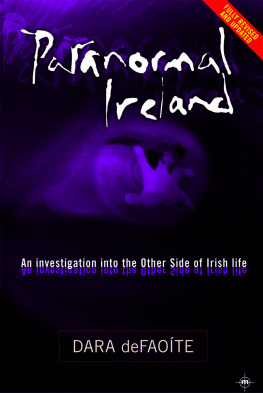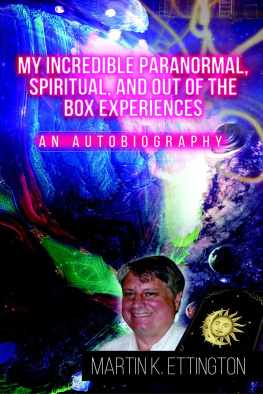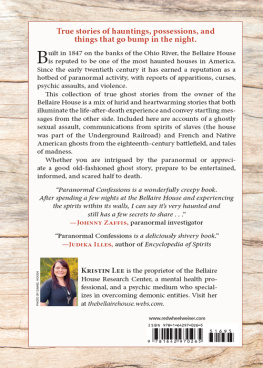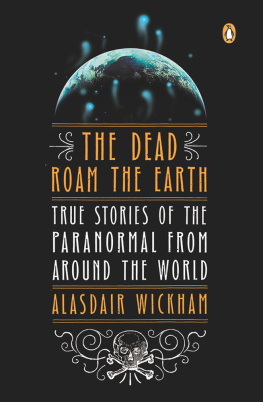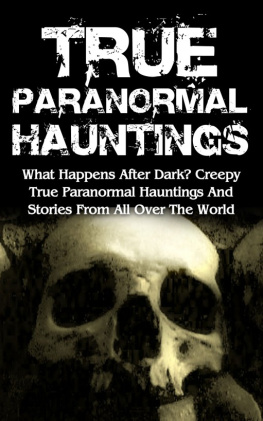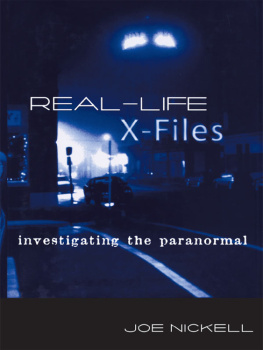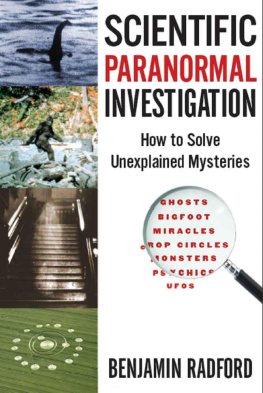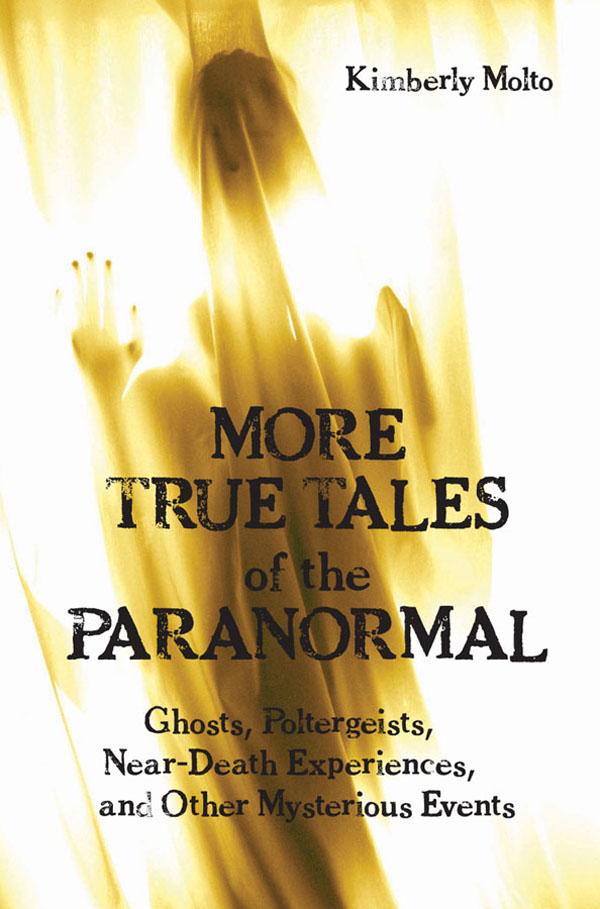Acknowledgements
The author wishes to thank Madeline Kinney, Julian Howard, Ian Godfrey, Dr. Michelle Douglas, Dr. Eric Howard, Michael Duffy, Chris Howard, Detective Tony Fenaro, and the rest of the team; Tony Hawke and those at Dundurn Press, Dale Kaczmarek of the Ghost Research Society, Matthew Didier of the Toronto Ghosts and Hauntings Research Society at torontoghosts.org, Jeff Belanger at ghostvillage.com, Guelph Public Library for their invaluable resources; Bill and Heather Vandivier, Ruth Anne Roth Clayton, Monique Skinner, RN (EC) NP-PHC, Tony Arpa who was across the way when it all began and remains still, and special thanks to all those people who generously shared their very personal stories in hopes that it would provide insight and comfort to others.
appendix
Ghostbusters: Quantum Quarks in a Brave New World
In my previous book, True Tales of the Paranormal, I dedicated a chapter to some of the scientific theories that may apply to the mechanics of some types of psychic phenomena (PSI=). This appendix will only offer up a brief synopsis as there are so many books and papers that deal with nothing but the scientific aspect of this fascinating field, written by persons much more qualified than myself. These include mathematicians, physicists, experts in electrodynamic conduction and fields, MDs, psychologists, and others who are considered true investigators of parapsychology like Scott Rogo, Raymond Bayless, William Roll (who has put more time in researching poltergeists in recent times than anyone else), J.B. Rhine, Dr. Karlosis Osis, Raymond Moody, and Edgar Mitchell (to name just a few in a long list) who have dedicated their lives and in some cases even established research institutes or departments within universities dedicated to the study of PSI, i.e., ESP/telepathy, near-death experiences, reincarnation, etc. Terms and words that you have probably already become familiar with in other books on the paranormal, as well as those you will be coming across more and more in the near future are explained here and in the glossary. For a thorough read on the scientific aspects, there are many excellent books and articles focusing on those specific topics at libraries and on the Internet. Even if they are older, do not be put off, as they have stood the test of time. By the time this book hits the shelves, there will be new papers and books as the advancements and discoveries march on.
Part One
Quirky Quantum, Reality, and PSI
While reviewing and condensing the physics and mathematics for this part of the book I was constantly reminded of a line from a Pink Floyd album, For Ive looked over Jordan and Ive seen, things are not what they seem. As advancements and discoveries progress in science, the underlying structure of reality, including what we see on a day-to-day basis, is not what it seems.
Whenever I read up on theoretical physics and applied mathematical formulations, whether related to PSI or not, I am in awe. It has given me a new perception of the universe and world we live in, as well as a better understanding of anomalous events that I have been documenting and researching for over two decades. It has also given me and many others pause as we realize that we need to take a second, good hard look at what we call the reality. I suppose in time a lot of those things we do not yet understand will later be taken for granted, like gravity and that the world is round and not flat, but to get to that point we require more research.
As a result of all the research and my own personal experiences, I was sure of the authenticity of PSI events but was confused as to why all but such a minute part of the scientific community did not seem interested. Conventional science has not invested a lot of time and money into researching parapsychology (or what I like to call para-physics and if there is no such word, there is now) for a number of reasons, including the problematic factor that PSI tends to be intangible, unpredictable, and for the most part, uncontrollable. This renders the study of PSI especially challenging. It is not something that can be collected, packed up in a box or test tubes and brought back to a lab where it can be studied in a controlled environment. Nor can it be summoned up on demand or contained once present. Furthermore in science, testing a theory or hypothesis must be repeated, which is obviously problematic with PSI phenomena. Even working with those individuals where it has been established that they are the authentic thing, i.e. people who possess something like ESP or telekinesis; they are humans, not machines or lab rats, nor are they magicians who can perform on demand. This is as frustrating to the psychics (or test subjects) as it is to the scientists.
Combined with these challenges and obstacles is research funding, which is a major concern in all areas of science. Whether it is government, private sector, or corporate support, a business degree often appears to be more fitting than a PhD or MD, as you have to spend so much time presenting the cost/benefit ratio and projected financial profits. I recall more than one of my former professors commenting that they spent more time in boardrooms than labs! (I must interject here that most scientists do not make the best business persons. Conversely, most MBAs do not make the greatest scientists and in a lab are akin to a bull in a china shop.) Especially in the private sector, a presentation is required to demonstrate the projected outcomes, how it is applicable, and what the return on the investment will be. The enlightenment, advancement of human understanding of our world/universe or the possible overall benefits to humankind is of little or no interest to the corporate sector, and the government has other more pressing concerns.
If this funding criteria was in place back in the good old days., we would not have such inventions as the laser. At the time, those who discovered and developed this magnificent technology did not fully comprehend what its applications could be, so it required more research funding to further refine it and thus ascertain its potential uses (the same applied to insulin). Now look at the many and varied applications of the laser and the lives saved by insulin. Commercial applications or value often do not become apparent until after the facts have been established. Therefore a large body of the funding is derived from donations, bequests, memberships, and the money generated from the work of established organizations dedicated to PSI research, including departments in various universities.
I have gone off on a bit of a rant here but with the inherent problems researching PSI and the funding difficulties, I felt it necessary to explain why a large part of the scientific community is not jumping at some of these fascinating phenomena. I should add that many scientists just dont see the connection or even accept the validity of PSI activity.
John Polkinghorne of the Department of Applied Mathematics and Theoretical Physics at Cambridge University once stated that, Your average quantum mechanic is about as philosophically minded as your average car mechanic. Those that do at least accept not only the possibility but the probability of it are afraid for their careers and reputations. Even I was warned that publishing books of this nature could affect my chances of receiving grants in the future for serious research. This is nothing new. In fact it dates back to the nineteenth century (where in some cases the critics became converts and joined forces to form The American and British Society for Psychical Research and forged on with their research and publishing). Author Catherine Crowe wrote in the preface of her collection of ghost stories that, I avow, that in writing this book, I have a higher aim than merely to afford amusements I wish to engage the attention of my readers, because I am satisfied that the opinions (that I am advocating), if seriously entertained, would produce very beneficial results.


